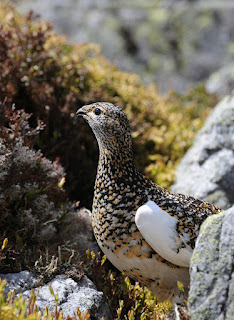Coral and shells
Lady Elliot Island is entirely built of coral and shell (with a bit of guano and plant matter added later). It rose from below the surface about 3500 years ago and the foundation platform can be clearly seen to be formed from the coral and shells, and the current coral platform which surrounds the island can be seen forming the next extension to the island if it is uplifted again in another few thousand years.
Although most of the colour in the coral is seen when it is alive and underwater, bits and pieces are washed up on to the beaches along with sponges.
And there are thousands of seashells on the beaches. The island is a green zone, where removal of anything natural from the island is prohibited, and as a result every visitor has the joy of walking the shore and discovering a variety of shells. It is the best beach I have ever seen for shells, with several species of cowrie and cone shells - the builders of some of which are deadly poisonous if picked up when alive. Then there are clams, spiders and others I cannot remember, there were so many.
My prize find was a nautilus shell with barnacles growing on it.
I also found a splendid growth of barnacles on an old washed up log. The whole shore is a beachcomber's delight.





















































